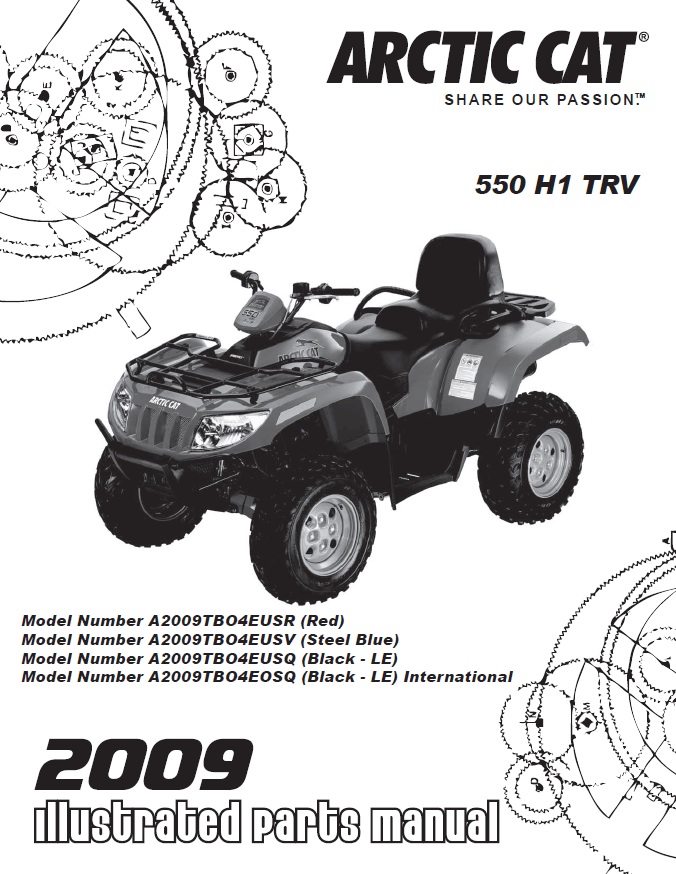that's about it you want to clean up the
drain plug real good a lot of times will
be some little tiny metal shavings on
there and usually I'll just wipe around
the hole where it threads in just to
make sure there's an up dirt that way
you get a good seal on the gasket and
just put it right back in there whoops
now I'm sure you could probably look up
the specifications and get a torque
wrench to figure out the exact amount
you're supposed to tighten this but
basically I just tighten until it's real
snug okay we're on the right side of the
four-wheeler as if you were sitting on
it and you can see I put a drop light in
there just ahead of that is where the
oil filter is right on the very front of
the engine case as long as this whole
filter wasn't over tightened when it was
installed it should come right off by
hand but you can put oil filter pliers
in there if you have to yeah it looks
like this one's got to come off
make sure your drain pans down
underneath and take it right on
there'll be a little bit of oil that
drains out of it obviously so there we
go there's the old one and that is a
NAPA apparently is the one that I put on
there last time I'm putting a CARQUEST
filter back onto it
the CARQUEST part number for this
particular machine is an eight five
three five nine you want to make sure it
is the correct filter for the machine
because these powersport filters usually
do have an anti drain back valve so it
helps hold the oil in the filter that
way it doesn't drain down and when you
start the engine out when you start the
engine up cold there's oil already in
the filter that starts going through the
engine and what I'm going to use for oil
is this Valvoline ATV ten W 40 weight
four-stroke oil I've used it in the past
on all my Arctic Cat machines it works
great never had a problem with it of
course there's plenty of brands that
will work just as good I'm sure as long
as it meets the requirements of the
machine always take a little bit of
fresh oil and just lube up that gasket
doesn't have to be a lot just enough to
wet it like that
you take your new filter make sure the
gasket comes off the old filter by the
way if it sticks on your engine case and
you put a new filter on there with the
old gasket still there well that's
called a double gasket and usually what
happens is it will blow out and oil will
go everywhere just want to Snug it up
pretty good don't want to over tighten
that either so now we're ready to add
the oil
okay now we're on the left side of the
wheeler as if you were sitting on it
would be on your left side you can see
the oil fill plug which is right here
our oil fill cap I should say and it has
a small little dipstick on it here I
should put it down in front of the lake
probably and we'll get a funnel to put
the new oil in there okay I think I
found the perfect funnel I'm going to go
ahead and start pouring oil into then
case look at that nice clean oil going
in there oh yeah just going to make that
engine happy right there hell yeah
good enough good enough now yet another
so 2500 milliliters is obviously two and
a half liters of course I have quarts
because I'm here in the United States
not sure when it will be but eventually
I'm sure will convert to the metric
system until then we have to convert
everything that's metric but a quart is
almost a liter
the reason core bottles are shaped like
this is so that you can pour it without
it glugging on you if you take a fresh
quart of oil you try to pour it like
this that's what happens here to let
that air get in there in case you didn't
know that as far as I can recall it
takes a little bit more than what's
stamped on the case with a filter change
and everything this is one way to find
out
like to just clean that out a little bit
now when you check these you don't screw
them all the way down in you just place
the dipstick in there
and then pull it out and right there may
not be able to see but we're actually
right at the full mark just barely above
it now what I'm going to do is replace
this cap fire up the Machine and that
should put a little bit in the oil
filter and I believe it's going to be
right where it needs to be all right
let's see what we've got
okay so let's go ahead and check the oil
again I'm going to do first his wife
wipe that off and just like last time
just place it in there until it's all
the way down without screwing it and
bring it back up and that is perfect
really just about perfect it's right
here which is just under the full mark
it'll take a second for all the oil to
drain back down in the pan anyway so so
there you have it that's how you change
the oil on an Arctic at a TV like I said
this one is a 2005 500 but most of them
are quite similar as far as the
procedure goes cheers everybody
take care and happy ATVing
Delivery options and delivery speeds may vary for different locations
Sign In
or enter a zip code
Email * Password *
REPAIR & HOW TO
MAINTENANCE
TROUBLESHOOTING
GUIDES
TIPS & TRICKS
ALL ARTICLES WATCH VIDEOS ABOUT US SHOP PARTS CONTACT US
Arctic Cat recommends changing the oil in your ATV every 3 months. If you don't ride Arctic Cat ATV very often, you could get away with putting off oil changes a bit, but you'll still need to change your Mud Pro 700's oil on a regular basis.
Watch the video above and follow the steps below to do an oil change on an Arctic Cat Mud Pro 700.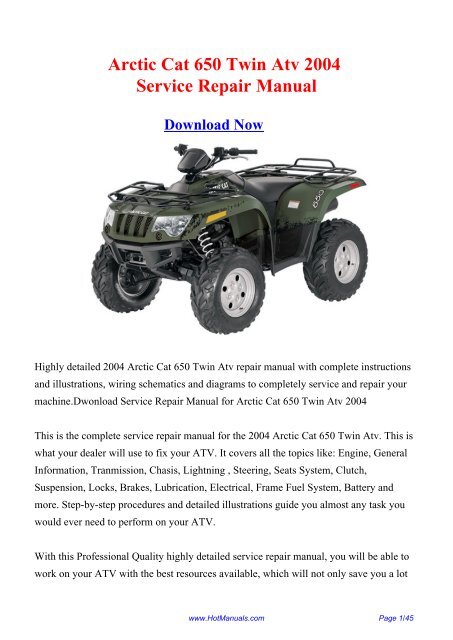
PRO TIP: Before changing your Mud Pro 700's oil, run the engine for a minute to warm the oil, which makes it drain faster.
Changing the Oil in an Arctic Cat Mud Pro 700Step 1. Remove the seat, the left side panel and the oil dipstick.
Step 2. Remove the oil drain plug located beneath the motor, which is accessed through the hole in the belly panel. Let the oil drain out completely.
Step 3. Inspect the old drain plug gasket. If it has become flattened from overuse, replace it with a new drain plug gasket.
Step 4. Reinstall the oil drain plug and drain plug gasket.
NOTE: Some Arctic Cat ATV owners replace the drain plug gasket with every oil change, but it should be changed at least once a year.
Step 5. Remove the old oil filter, which is located on the lower right side of the motor and accessed from beneath the right front fender. Have a rag ready to clean up any oil that spills out of the old filter.
NOTE: If you change the oil filter regularly, you'll probably be able to remove the old filter by hand. However, if the filter has been there for a while and is stuck, you'll need an oil filter wrench to remove it.
Step 6. Take a new oil filter, lube its O-ring with engine oil and install the filter.
Step 7. Add 2 quarts of quality engine oil and reinstall the oil dipstick.
Step 8. Run the engine for a minute, then switch it off and check the oil level on the dipstick. Top off the oil level if necessary and you're done.
body
The popularity of ATVs has led to a wide range of models - from simple models with minimal equipment to powerful multi-axle options for purely utilitarian purposes. A separate article is sports ATVs, which are distinguished not only by highly accelerated motors with the utmost lightening of the structure, but also by the use of mechanical gearboxes instead of the usual variator. Such a technique can be both a great way to get adrenaline and help a hunter or farmer. nine0003
Proper selection of ATV engine oil will allow you to get the maximum resource from it. This is especially important during tough operation - transporting heavy loads, overcoming fords, etc. Even on a prepared ATV with snorkels installed, there is a high risk of water entering the crankcase, which means that the protective properties of the oil must be at a high level.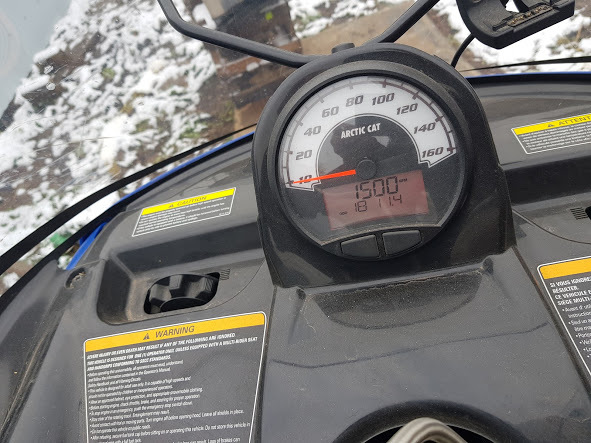 In any case, if an emulsion is found on the dipstick or in the oil tank (on ATVs with a dry sump), the oil must be changed immediately. Will require inspection and gearbox. nine0003
In any case, if an emulsion is found on the dipstick or in the oil tank (on ATVs with a dry sump), the oil must be changed immediately. Will require inspection and gearbox. nine0003
For most models of four-wheel vehicles, ROLF Lubricants GmbH can offer oils of decent quality and attractive prices with reliable counterfeit protection.
Engine oil for ATVs must first of all match the type of engine. The vast majority of existing models are equipped with one- or two-cylinder water-cooled gasoline engines, that is, they require oils of the API S group. A small number of ATVs produced in the most basic configuration continue to use 2T engines - they are simpler, cheaper and lighter. In this case, only special two-stroke oils of API TC quality class can be used. nine0003
Diesel engines are also installed on heavy utility ATVs, including the Side-by-side class. For them, it is worth choosing a specialized oil for diesel engines (API C class group), but filling with universal motor oils is also possible, since their characteristics are suitable for diesel engines used on utility ATVs.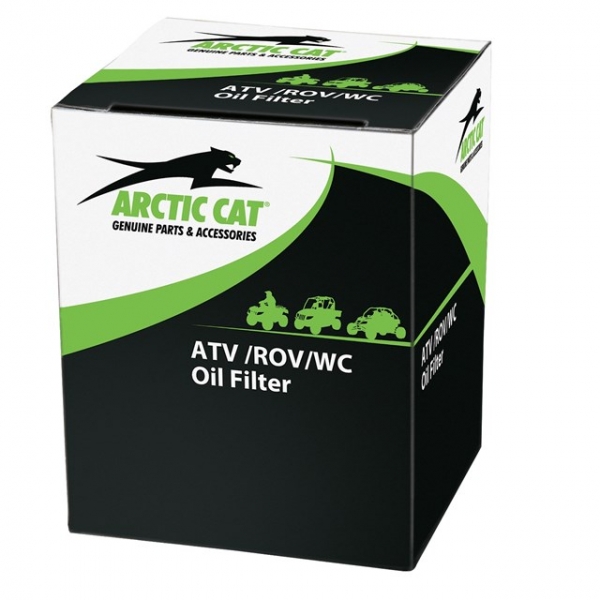
The oil change interval is determined by the manufacturer and is given in the service book. It is recommended to change the oil at the beginning of the season if the ATV is not being driven in the winter, even if it has had little mileage the previous year. nine0003
Since most ATVs are equipped with a CVT transmission and do not have a clutch in an oil bath, they do not have an urgent need to use 4T motorcycle oils. The fundamental difference between motor oils for four-stroke engines and conventional automotive oils lies precisely in the presence of friction modifiers and the rationing of anti-friction properties, which is necessary to ensure the normal operation of the clutch.
Therefore, the use of ROLF automotive engine oils on such ATVs is more than justified. For example, the instruction manual for BRP Outlander ATVs explicitly states that the original engine oil can be replaced with any SAE 5W-40 automotive oil with a quality class of at least API SG. With such low requirements, any ROLF 5W-40 oil will work perfectly in this technique. nine0003
With such low requirements, any ROLF 5W-40 oil will work perfectly in this technique. nine0003
You can do the same when buying a diesel ATV. For example, for Polaris Ranger Diesel, the instructions require the use of original Polaris Diesel Oil (SAE 15W-40) engine oil or diesel oils of the appropriate viscosity.
There are only two cases where motor oil must not be poured into an ATV engine. First of all, we are talking about sports models equipped with a “wet” clutch and a manual gearbox in a common lubrication circuit with a motor. They need specialized, synthetic four-stroke oils designed specifically for these operating conditions. nine0003
Two-stroke ATVs also need their own type of lubricant. Of the entire range of two-stroke oils, those that are designed for motor vehicles are optimal, taking into account their inherent operating temperatures and loads.
This oil is designed as a universal oil for motor vehicles with medium and large cylinder displacement. It is compatible with all types of lubrication systems, can work in a gasoline-oil mixture, in separate lubrication of carburetor engines and on two-stroke engines with electronic fuel injection. nine0003
It is compatible with all types of lubrication systems, can work in a gasoline-oil mixture, in separate lubrication of carburetor engines and on two-stroke engines with electronic fuel injection. nine0003
ROLF MOTO 2T ATV Engine Oil
ROLF Moto 2T meets stringent current requirements for two-stroke oils for protection against wear, smoke and carbon formation. It maintains the performance of the spark plug for a long time, preventing contamination of the electrodes by unburned oil residues. Thanks to anti-wear additives, the engine remains protected from scuffing on the piston and cylinder walls at high temperatures.
| Density at 15°C, kg/m 3 | 876.8 |
| Kinematic viscosity at 100 °С, mm 2 /s | 10.76 |
| Kinematic viscosity at 40 °C, mm 2 /s | 81.36 |
| Viscosity index | 118 |
| Flash point in open cup, °C | 158 |
| Pour point, °С | -42 |
| Quality classes | JASO FD/ISO-L-EGD, JASO FB/API TC |
| Approvals | Rotax 253, Piaggio Hexagon |
Four-stroke ATV engines with CVT transmissions are subject to the same standardization systems as for automobiles. That is, the main quality classification is the generally used API standard, and due to the less stringent environmental requirements for ATVs, obsolete classes like API SJ are still used today. nine0003
That is, the main quality classification is the generally used API standard, and due to the less stringent environmental requirements for ATVs, obsolete classes like API SJ are still used today. nine0003
The viscosity of oils is also marked according to the SAE standard used for automotive oils. Since ATVs are often used not only in summer, but also in the off-season, and sometimes in winter, the best choice for them is all-weather oils, which is also confirmed by the above excerpts from the requirements of the instructions.
For wet clutch ATVs, the engine oil must also meet JASO MA2 quality class. It takes into account the specific requirements of such motors for the anti-friction properties of oils. In the ROLF product line, ROLF GT 5W-40 SN/CF has this approval. nine0003
Two-stroke oils are standardized according to a separate group of API classes, of which API TC is currently relevant. But it is optimal to choose an oil produced taking into account additional JASO / ISO specifications with a group of at least C (that is, JASO FC, ISO-L-EGC).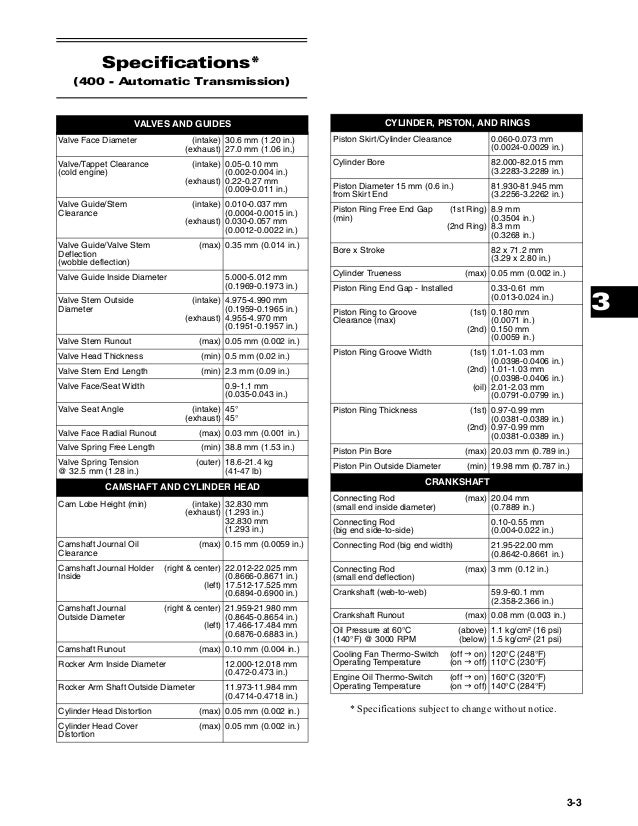 Compared to API TC oils, they protect the engine better, smoke less during combustion, and form less carbon deposits.
Compared to API TC oils, they protect the engine better, smoke less during combustion, and form less carbon deposits.
Since the gearbox on ATVs either requires no lubrication at all (dry CVT) or the manual transmission is lubricated directly with engine oil, only the gearboxes require their own lubrication. nine0003
The choice of replacement oil should be based on the properties of the original lubricant and the indications in the operating instructions. Thus, gearboxes with a mechanical differential lock (including an external solenoid) can most often operate on conventional ROLF gear oils of API GL-4 or GL-5 quality class. For example, for Arctic Cat ATVs on most models, the instruction recommends using oils with a viscosity of SAE 75W-90 and API GL-5 quality class. These requirements are met by ROLF TRANSMISSION PLUS 75W-90 GL-4/GL-5. A number of BRP ATVs require the use of a thicker 75W140 grade GL-5 oil, and there is no analogue for it in the current ROLF line.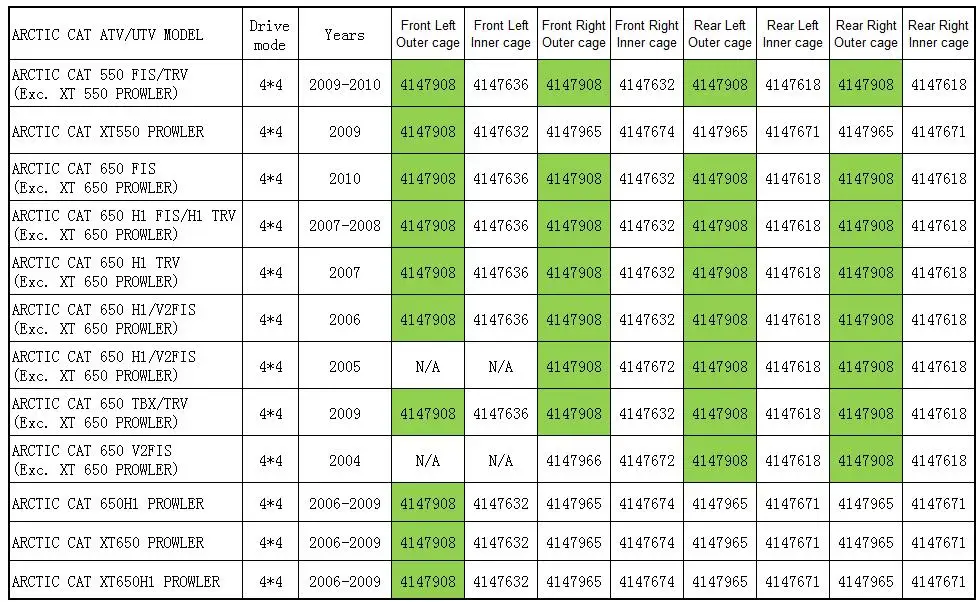
Gearboxes with viscous or electromagnetic clutches deserve special attention. The use of conventional gear oils in them can disrupt the normal operation of the gearbox and even lead to its repair due to clutch failure. In particular, this applies to Polaris front gearboxes lubricated with Polaris Demand Drive special oil.
Suspension. Shock absorbers must be free of oil, and CV boots must be free of holes through which moisture can enter. To check the condition of the wheel bearings and hub bushings, you need to raise the ATV with a jack and shake the wheels vertically and horizontally - if there is play, one of these parts is worn out. Most often these are bearings. You also need to check all the suspension arms for play - perhaps ball bearings or silent blocks need to be replaced. nine0003
ATV with working shock absorbers lowers and rises evenly - when pressing on the rear or front, one of the sides should not sag.
Transmission. Gearboxes must be free of oil leaks and cracks. The oil in them can be checked by lowering a plastic clamp into the filler neck or unscrewing the drain bolts: it’s bad if the liquid is opaque, it contains chips or other foreign particles. To check the modes of operation of the transmission, you need to jack up the front of the ATV. When all-wheel drive is on, when turning the left wheel, the right wheel should rotate in the opposite direction, and vice versa. When the differential lock is engaged, both wheels rotate in the same direction. Transfers should be included without effort and crunch. nine0003
Engine. It must be free of oil. A serviceable motor starts in 2-3 seconds and works without a metallic rattle, an arbitrary increase and decrease in idle speed.
Bad sign - black oil or with foreign particles. Normally it is transparent.
A malfunction is also indicated by black, white or blue smoke from the exhaust pipe, as well as a burning smell. At idle, the exhaust gases of a serviceable ATV are almost transparent. nine0003
At idle, the exhaust gases of a serviceable ATV are almost transparent. nine0003
It is advisable to measure the compression in the cylinders - this will require a compression meter with adapters for different threads of the candles and knowledge of the normal compression value in the cylinders of a particular ATV model, taking into account the decompression meter.
Coolant . You need to check with a cold engine. The antifreeze level must be between the minimum mark "LOW" and the maximum "FULL". The liquid should not be cloudy. If there is sediment or dirty “flakes” under the radiator cap, the motor was poorly maintained and may have overheated. nine0003
Air filter . If there are oil stains on it, most likely the ATV turned over.
Electrical . It is necessary to check the operation of the parking lights, high and low beams, turn signals, alarms, horns, heating, winches. Error indicators - for example, an electric booster - should go out when the engine is started.
Electric power steering . With the ATV running and jacked up, turn the steering wheel left, right, then center. With a working electric power steering, the steering wheel does not turn on its own. nine0003
Frame. Cracks, extensive corrosion, welding spots, stripped or fresh paint in the places where the suspension arms are attached, on the arms themselves and on the bottom of the frame - a reason to refuse to buy. Cracks or welding in the cargo platform area are not critical.
The difference in one or more bolts of the engine, variator or bridge, as well as traces of sealant on the crankcase connectors, indicates that the assembly was disassembled to fix the breakdown.
ATV in good working order does not pull to one side. When moving back and forth with the wheels fully inverted, there is no cod. The start of movement and acceleration without jerks and bumps. When you turn on the four-wheel drive and differential lock, it becomes more difficult to turn the steering wheel.